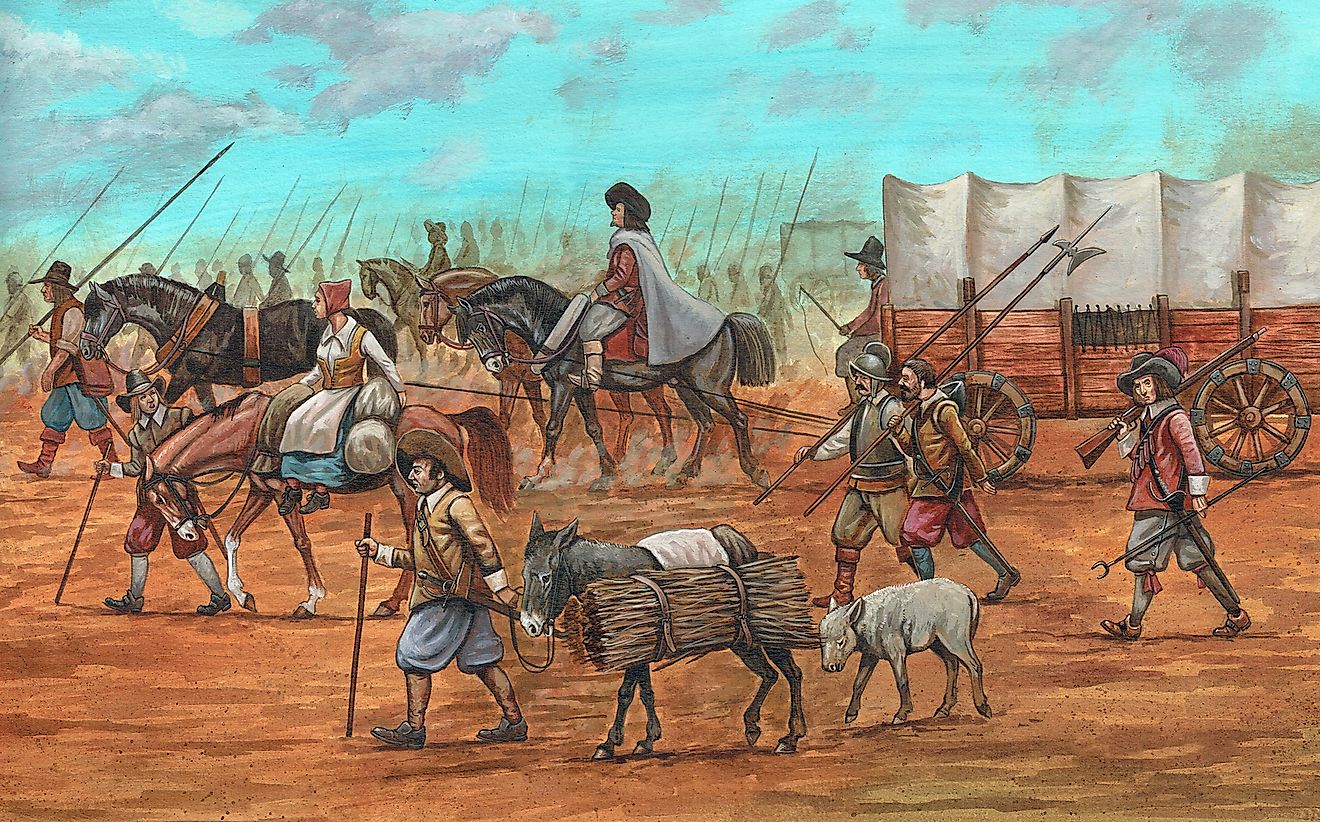Facts About the Thirty Year War

The Thirty Years’ War was fought in the period between 1618 and 1648. It is notorious for the number of casualties the war produced on the side of the civilians as well as the destruction of the area on which the war was conducted (which is now Germany).
Along with the number of civilian casualties, the Thirty Years’ War was also one of the longest and most aggressive conflicts in the history of Europe to this day. What began as a relatively simple conflict between the Catholic and Protestant states within the Holy Roman Empire, has progressively grown to include all of the influential European nations. Both France and the Habsburgs were competing for the hegemony over Europe, while the citizens were either entirely on one side or the other. Amid the conflicts between powerful adversaries, religion became the daily concern for all the classes involved.
Here are seven less known facts about this long-lasting war.
Mass Conversions to Roman Catholicism`
At the early beginnings of the war, a new Emperor of the Holy Roman Empire was elected. Ferdinand II did not waste time to impose religious homogeneity across his empire. The significance of this strategic move was immense as it meant that it did not matter if the subjects of the empire practiced a different religion before; they were obligated to convert to Roman Catholicism. The Protestant countries in the north fervently opposed this on the basis that it was a transgression of their civil rights. The opposition grew to form the Protestant Union, which resulted in an oppressive atmosphere of political-religious turmoil that spread across Europe, causing an outbreak of violent conflicts.
The Conflict Ensued With The Peace of Augsburg
The Holy Roman Emperor Charles V sanctioned the Peace of Augsburg in 1555. With the Peace signed, the religious conflict between the German Catholics and German Lutherans was ended. The primary objective of this agreement was the attempt to ensure that the heads of the 224 German states would be able to choose either Catholicism or Lutheranism and their citizens would have to convert to the same religion, without exceptions.
Redefining European Power Structures
During the last ten years of the war, the previously strong and powerful Spain was losing its significance on the European map, while some other countries were gaining influence. One of those countries was Portugal, which was ruled by King John IV of Braganza, elected in 1640. His house name became the new Portuguese dynasty. In 1649, the Dutch Republic claimed its independence causing Spain to forfeit the idea to one day own it. France was also gaining significant power within the European political framework, having fought and won three significant wars under Louis XIV: the war against Spain (1635-1659), the War of Devolution (1667-1668), and the war against the Dutch (1672-1678).
The Reign of Power and Money
At the time of the Thirty Years’ War, nationalistic identifications were not a significant matter. The reigning ideals were gaining as much power and money and not the love for your country. This means that those in the power positions wanting to fight wars would have to reach into their treasuries to pay mercenaries to fight. These circumstances made exhaustive battles hard to fight, not only due to the limitations of the number of people they could hire but also because once the armies would seize a city, it was impossible to control their behavior. For the ordinary citizens of the cities under attack, this was what created the most suffering - the uncontrolled armies of soldiers pillaging and leaving chaos.
The Global Effects of the Thirty Years’ War
Even though the Thirty Years’ War was fought on the territory of today’s Germany, its ramifications were not concentrated only on Europe, as one might think. The European power countries had an open path to the colonization of the overseas countries. The Dutch were among the first ones to attempt this by claiming an area in Brazil that was a stronghold for sugar export, in 1630. The area, Pernambuco, was initially under Portuguese rule until the Dutch took over. However, in 1654, the Dutch lost the area. Asia and Africa were also the victims of these colonial attempts. A massive number of cultural and religious monuments were destroyed during the efforts at the occupation of the regions, along with religious conversions of Buddhists and Hinduists to Catholicism.
The Bloody Battle Of Lützen
It was November of 1632 when perhaps the most brutal conflict of the entire war was fought. The Battle of Lützen was held between Sweden and its allies, and the army of the Holy Roman Empire. Along with the thousands of casualties of this battle, Swedish king Gustavus Adolphus was also killed. His armor was taken off his corpse and sent to Vienna to serve as a trophy. Although the Swedish lost their leader, the conflict ended up victorious for Sweden and the allies.
The Golden Age of the Dutch Republic
Even though the ramifications of the long-lasting war as was this one are typically dire for all those included, the Dutch have gained massively. They were free at last of the Spanish rule and were able to build their bright future while the majority of Europe was attempting to clean up the ruins left by the war. From 1650 until 1700, the Dutch enjoyed the Golden Age of their Republic.











